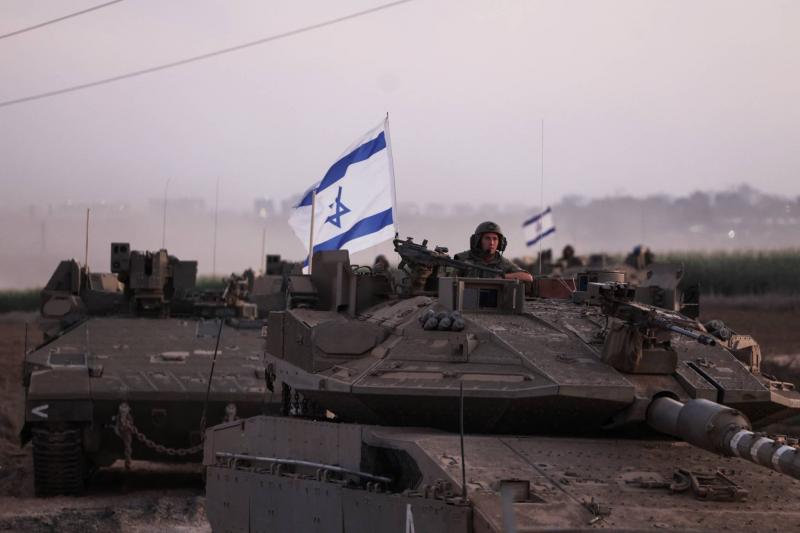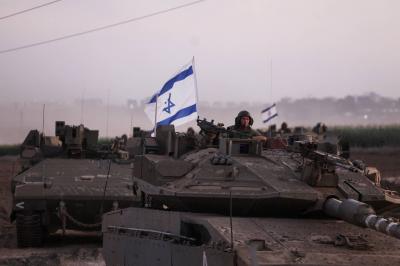The countdown for an invasion of the Gaza Strip has begun with a wide and violent destruction campaign, along with a request to the United Nations to clear the way for its forces to relocate half of the population from northern Gaza to the south. This information was reported by the online newspaper "Foreign Affairs," which pointed out that the Israeli attacks on Gaza are not new; previous actions were limited preparatory operations that included sporadic airstrikes within the territory.
The newspaper noted in a report titled "The High Cost of Crushing Hamas," that “Israeli ground assaults in Gaza are bloody and extremely challenging. During the last major operation in 2014, nearly 66 Israeli soldiers, six Israeli civilians, and more than 2,000 Palestinians were killed, despite the army only advancing a few miles into the enclave, with most of the Palestinian casualties being civilians, of whom a quarter were children." The decision has been made, and no Israeli official can reverse or express reservations about the details pertaining to the military operation's course, according to the newspaper.
Thus, “the immediate military objective for Israel now is to destroy Hamas, or at least inflict severe damage upon it. Israel will seek to kill the political and military leadership of Hamas or capture them or drive them underground, and will also attempt to destroy Hamas’s infrastructure and weapon stockpiles. These objectives are likely to require at least temporary occupation of all of Gaza or a portion of it. Hamas is simply entrenched in too many places to be eradicated by bombs and airstrikes alone.”
The newspaper believes that “capturing Gaza will cost Israel dearly. Israeli forces will have to engage in house-to-house combat against a well-prepared faction that intends to make the invaders pay for every inch. Progress will be slow, and the fighting will be brutal. Israel will need to utilize overwhelming firepower to achieve serious gains and meet its objectives. In this process, a large number of civilians may die.”
The next bloody battle, as the newspaper sees it, will “not end when Israel reoccupies the area. There is no single Palestinian entity that Israel can trust to govern Gaza instead of Hamas. As a result, military victory could mean that Israel will have to govern the area in the foreseeable future. In other words, Israeli officials will have to manage a destitute population that regards them as enemies and could wage guerrilla warfare against them. The prospect of such resistance makes the new occupation of Gaza quite unappealing for Israeli planners. The best scenario for Israel might be to deliver a strong blow against Hamas and make significant enhancements to the Israeli border with Gaza, but not for an extended period.”
Analysts Daniel Byman and Seth G. Jones pointed out in this report that “with the Gaza Strip surrounded by intelligence, surveillance, and reconnaissance assets, including drones and reconnaissance aircraft with advanced sensing capabilities, Israel hopes these assets will allow the Israeli army to gain insight into the interiors of homes and the nature of the terrain that soldiers will have to traverse during their advance. The Israeli army will complement this information with intelligence gathered from human sources, satellites, and others, providing them with general guidance as they operate on the ground and helping them locate Hamas and avoid ambushes.”
Furthermore, “Israeli forces are attacking Hamas with artillery and aircraft such as F-15s and F-16s. The Israeli army will carry out similar strikes using military drones like Hermes 450 and Heron 900. Israel has directed a section of its special operations forces deep into Gaza, where they are likely to carry out raids to kill Hamas leaders and free prisoners. Israeli special operations are highly qualified, but Hamas may be prepared for such attacks, making these raids risky.”
The experts also anticipate that Israeli forces will eventually advance slowly into Gaza after weakening Hamas’s military assets, using infantry carried on armored personnel carriers, supported by Merkava tanks and bulldozers. The Israel Defense Forces will act cautiously to avoid casualties on their side. They will try not to shoot indiscriminately, but their primary goal will be to weaken Hamas, which will require significant firepower. Ultimately, the Israeli army's goal will be to minimize their losses, and they will not hesitate to shoot first when they feel threatened.
The newspaper points out that “Hamas is, fortunately for Israel, trapped,” explaining that “Gaza is surrounded by Egypt, Israel, and the Mediterranean Sea; Hamas fighters have nowhere to go. Some may flee, but many of its fighters and members of its political network will be killed or captured. If Israel reoccupies all of Gaza, it can find Hamas's leadership, isolate it, and gradually detain or kill them, although separating them from the civilian population will not be an easy task even while maintaining control over the area.”
After detailing the numerous difficulties and unpleasant surprises that Israeli forces may encounter as they advance in Gaza, the experts state that “Israel may conclude that its best option is to strike Hamas hard, but ultimately withdraw to avoid an indefinite and exhausting occupation.”




